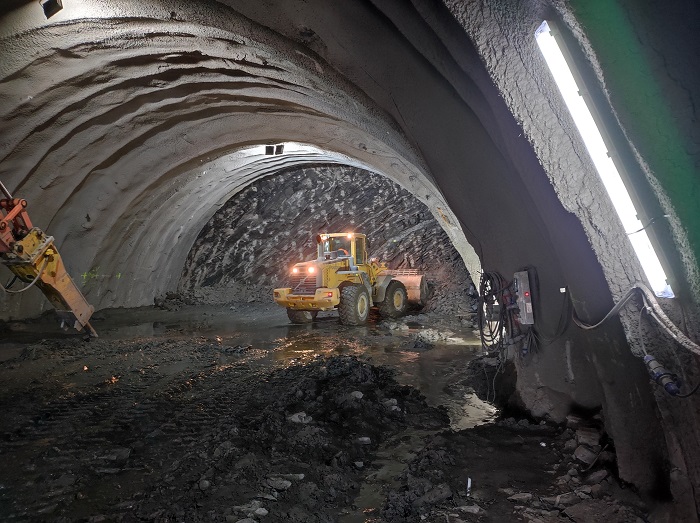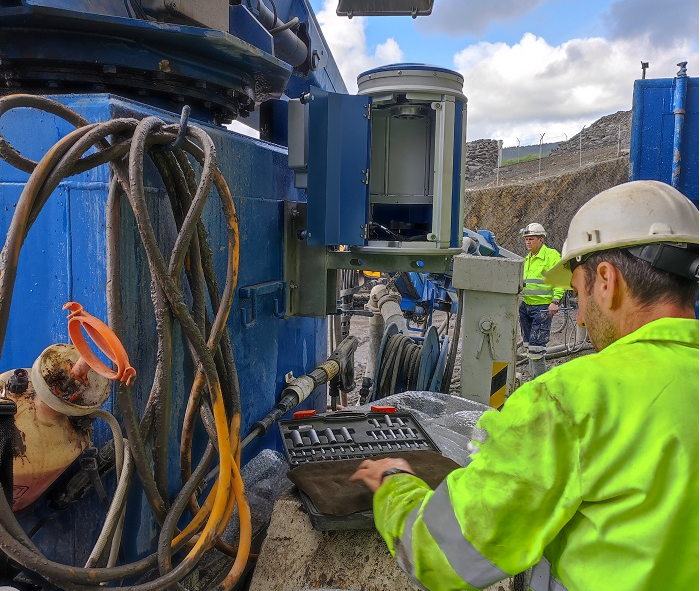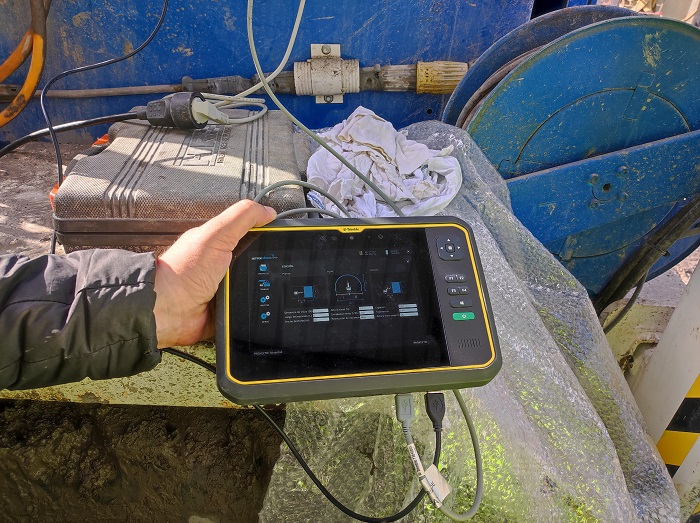The process of gunning concrete (shotcrete) on tunnel walls (projecting the concrete using a cannon onto the surface) is always imprecise, not only because of the amount of materials required, but because of the thickness required by project specifications.
This way, thanks to a laser, the worker operating the shotcrete robot can pinpoint where the layer is thinner and check whether the shotcrete was applied properly.
“The project arises from the need to control the thickness of the shotcrete projected onto the tunnel walls. Normally, we do it by eye, but we don't have a clear assessment yet, the topography survey must confirm whether we comply with the thickness”, explains Pablo García, Technical director of Cavosa. “We want to know what the state of the tunnel before gunning is, then establish specific shotcrete thickness, mark the areas where the application was thin, etc." says the expert.

First, the starting vault is scanned, then we apply the shotcrete, go over with the scanner again, and thus, the operator obtains information about the result, and checks in real time whether the thickness of shotcrete is right and, whenever we detect any areas with thinner application, we can go over them immediately.
“The idea was to test it on a real tunnel. Normally, gunning shotcrete creates dust, and therefore we need to fit the scanning equipment with a protective case specifically designed for this project. This way, whenever the equipment is not being scanned, it is protected from dust, projections, humidity, etc." says Carmen Martín Granado, project manager and manager of Topography in Spain at Sacyr Engineering and Infrastructures.

Cavosa has already tested this system on the Zumelegui tunnel, part of the "Construction of the Vitoria – Bilbao – San Sebastián High-Speed rail platform” Project.
“The tests carried out in the Zumelegui tunnel have shown that we also need to adapt the software to the different circumstances that may arise during the project. We are going to improve the software to speed up times and adapt it to other tunnels. The tests are correct, but we want the system to be flexible enough to apply to all types of tunnels", Carmen says.
This system entails considerable cost savings, not only on materials (an estimated improvement of 5%-7% reduction in the volume of concrete projected), but also on time, because if the thickness is not right post topographic survey, we need to reposition the machine and gun again.

Tunnel breakthrough
This same tunnel has also achieved a new milestone on September 9th, 2022. We made breakthrough in the Elorrio - Elorrio stretch. This section is designed for mixed traffic circulation with a maximum speed limit of 220 km/h for travelers and a minimum of 90 km/h for freighted products.
The tunnel has a total length of 206 m mine, and 279 m including the false tunnels and oblique tunnel mouths, with a single tube double track typology, ballasted section, and a 35 m maximum height.